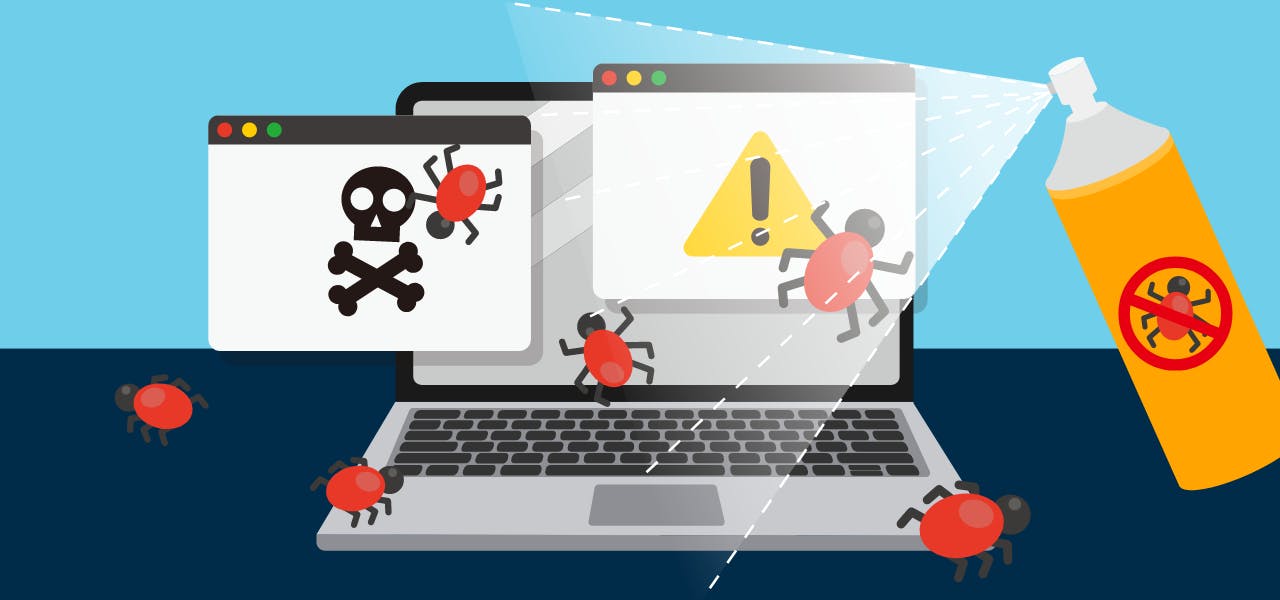Third-Party Debugging Tools: Should You Use Them

One of the biggest challenges with software development is tracking down bugs and performance issues. What may work perfectly on one device or system, may be plagued with major issues on another.
To make matters worse, users are notoriously intolerant of applications that perform poorly. For example, a survey by Dimensional Research found that 61% of users expect an app to start in 4 seconds or less. As many as 49% expected the app to start in 2 seconds or less.
The same is true for apps that misbehave. According to the survey, 80% of users will only try to use a problematic app three times or less. 53% of users said they would uninstall an app that crashed, froze or had errors and 36% would stop using an app over heavy battery use.
Unfortunately, the negative impact can go beyond just a single application. Dimensional Research found that 55% of users hold the app responsible for any performance issues, regardless of what’s really to blame, while 37% thought less of the company behind the app as a result of crashes or errors.
The message is clear: For an app to succeed, it must provide the best possible experience, and be free of crashes and errors. Needless to say, that can be a tall order to fill.
The Logistical Challenge
Few things have democratized the software development industry as much as the rise of mobile computing. Once largely the domain of dedicated development teams, mobile computing suddenly put financially viable development within the grasp of virtually anyone.
As iOS and Android took off, one-person development shops were suddenly on even footing with the old standbys of the industry. There have even been countless examples of children and young adults hitting on a great idea and turning it into a profitable app.
At the same time, however, a single developer has far more limited resources than an entire team. This can make it a challenge to properly debug an application and optimize performance to the necessary degree. Of course, debugging challenges are not exclusive to single-person shops or small teams. Some of the largest companies in the world have suffered the embarrassment of releasing a buggy update.
In either case, third-party performance and debugging tools have become a popular method of improving the quality of software.
The Advantages of Third-Party Tools
Third-party tools are designed to take much of the guesswork out of the debugging and optimization process. One of the biggest challenges developers face is getting ahead of potential bugs and issues.
Many developers use traditional crash reports and user-submitted error reports to keep track of undiscovered bugs. The problem with these methods, however, is they are reactive options. They rely on a crash occurring, a bug happening or a performance slowdown impacting the end user. Even then, there’s no guarantee the user will fill out the required bug or crash report. Especially if it’s already happened a couple of previous times, 80% of users will simply stop using the app altogether.
In contrast, third-party performance and debugging tools are designed to help catch problems before they become apparent to the user. In many cases, these kind of tools and APIs give a development team the ability to monitor an issue as it’s happening in real-time.
When an issue is discovered, many of these tools provide the option to rewind an entire session to see exactly what happened and what actions led to the issue. This can be an invaluable resource in rooting out performance issues that are hard to nail down using traditional testing.
Another, often overlooked, feature of third-party debugging tools is improved privacy. With increased privacy legislation, including the EU’s GDPR and the California Consumer Privacy ACT (CCPA), developers must balance tracking issues with protecting user privacy. For small development shops, properly implementing debugging measures that respect privacy and are compliant with regulation can be an overwhelming endeavor.
Third-party tools can be a valuable option. Because these tools are designed to work across platforms and are installed on millions of devices, privacy is a fundamental feature that is built into these tools. In addition, the companies behind them have economies of scale on their side. Because their software is being used on so many devices, they often have the financial, development and legal resources to make sure their products remain compliant with major legislation.
Conclusion
Software development has never been more popular or accessible to such a large pool of developers. Third-party debugging and performance tools can be an invaluable resource to help development teams, large and small, to improve the quality, stability and performance of their applications.
With users notoriously unforgiving in the face of misbehaving apps, high-quality software is more important than ever. Every developer serious about providing the best possible experience should give third-party debugging and performance tools a shot.
Related Articles

One of the biggest challenges with software development is tracking down bugs and performance issues. What may work perfectly on one device or system, may be plagued with major issues on another.
To make matters worse, users are notoriously intolerant of applications that perform poorly. For example, a survey by Dimensional Research found that 61% of users expect an app to start in 4 seconds or less. As many as 49% expected the app to start in 2 seconds or less.
The same is true for apps that misbehave. According to the survey, 80% of users will only try to use a problematic app three times or less. 53% of users said they would uninstall an app that crashed, froze or had errors and 36% would stop using an app over heavy battery use.
Unfortunately, the negative impact can go beyond just a single application. Dimensional Research found that 55% of users hold the app responsible for any performance issues, regardless of what’s really to blame, while 37% thought less of the company behind the app as a result of crashes or errors.
The message is clear: For an app to succeed, it must provide the best possible experience, and be free of crashes and errors. Needless to say, that can be a tall order to fill.
The Logistical Challenge
Few things have democratized the software development industry as much as the rise of mobile computing. Once largely the domain of dedicated development teams, mobile computing suddenly put financially viable development within the grasp of virtually anyone.
As iOS and Android took off, one-person development shops were suddenly on even footing with the old standbys of the industry. There have even been countless examples of children and young adults hitting on a great idea and turning it into a profitable app.
At the same time, however, a single developer has far more limited resources than an entire team. This can make it a challenge to properly debug an application and optimize performance to the necessary degree. Of course, debugging challenges are not exclusive to single-person shops or small teams. Some of the largest companies in the world have suffered the embarrassment of releasing a buggy update.
In either case, third-party performance and debugging tools have become a popular method of improving the quality of software.
The Advantages of Third-Party Tools
Third-party tools are designed to take much of the guesswork out of the debugging and optimization process. One of the biggest challenges developers face is getting ahead of potential bugs and issues.
Many developers use traditional crash reports and user-submitted error reports to keep track of undiscovered bugs. The problem with these methods, however, is they are reactive options. They rely on a crash occurring, a bug happening or a performance slowdown impacting the end user. Even then, there’s no guarantee the user will fill out the required bug or crash report. Especially if it’s already happened a couple of previous times, 80% of users will simply stop using the app altogether.
In contrast, third-party performance and debugging tools are designed to help catch problems before they become apparent to the user. In many cases, these kind of tools and APIs give a development team the ability to monitor an issue as it’s happening in real-time.
When an issue is discovered, many of these tools provide the option to rewind an entire session to see exactly what happened and what actions led to the issue. This can be an invaluable resource in rooting out performance issues that are hard to nail down using traditional testing.
Another, often overlooked, feature of third-party debugging tools is improved privacy. With increased privacy legislation, including the EU’s GDPR and the California Consumer Privacy ACT (CCPA), developers must balance tracking issues with protecting user privacy. For small development shops, properly implementing debugging measures that respect privacy and are compliant with regulation can be an overwhelming endeavor.
Third-party tools can be a valuable option. Because these tools are designed to work across platforms and are installed on millions of devices, privacy is a fundamental feature that is built into these tools. In addition, the companies behind them have economies of scale on their side. Because their software is being used on so many devices, they often have the financial, development and legal resources to make sure their products remain compliant with major legislation.
Conclusion
Software development has never been more popular or accessible to such a large pool of developers. Third-party debugging and performance tools can be an invaluable resource to help development teams, large and small, to improve the quality, stability and performance of their applications.
With users notoriously unforgiving in the face of misbehaving apps, high-quality software is more important than ever. Every developer serious about providing the best possible experience should give third-party debugging and performance tools a shot.
Related Articles
